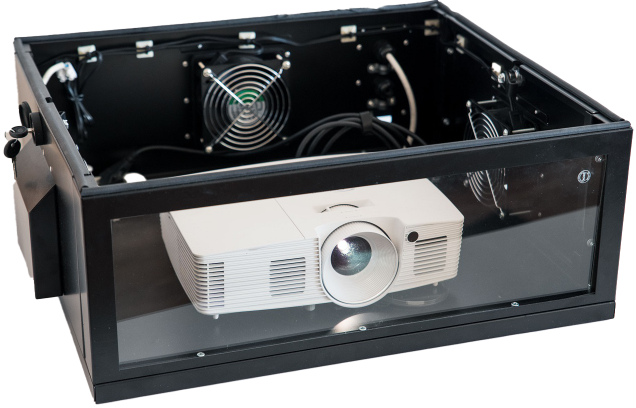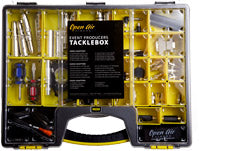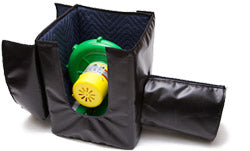Do projectors work during the day?
Do projectors work during the day?
Projectors are fantastic tools for outdoor movie screenings, home entertainment, business presentations, community meetings, and educational purposes. However, many people wonder whether projectors are effective in daylight conditions, and for outdoor cinema particularly. This article will explore whether projectors can work during the day, how to use a projector in daylight, and tips to get the best experience from your projector in bright settings.
Outdoor Movies and Daytime Projection
At Open Air Cinema, we always start our outdoor movie screenings at nautical twilight, about 30 minutes after sunset. All our our Outdoor Movie Systems and Inflatable Movie Screens are specifically designed to create an epic outdoor movie screening for you and your guests at the time of or after nautical twilight.
Although we have developed and utilized successful daytime projection technologies with our outdoor movie systems, it's an undertaking that is not particularly easy, and can be very expensive and time consuming.
Therefore we generally recommend to not attempt daytime projection with Open Air Cinema Outdoor Theater Systems.
With that being said, contact us if you absolutely need a daytime projection outdoor cinema solution for your particular application, we'd love to discuss it with you!
Understianding Projector Types
Before we dive into using projectors during the day, it's important to understand that not all projectors are created equal. There are several types of projectors, each with its own strengths and weaknesses.
LCD vs. DLP Projectors
LCD (Liquid Crystal Display) projectors are known for their bright and vibrant images. They use liquid crystals to display images, making them a good choice for well-lit environments. On the other hand, DLP (Digital Light Processing) projectors tend to be more compact and produce smoother video quality, but may struggle in bright settings due to lower brightness levels.
Lumen Rating
A crucial factor that determines a projector's performance in daylight is its lumen rating. Lumens measure the projector's brightness. Generally, a higher lumen rating means a brighter image, which is essential for clear visibility in daylight. For outdoor or daylight use, a projector with at least 2,500 to 3,000 lumens is recommended.
How to Use a Projector in Daylight
Using a projector in daylight can be challenging, but with the right strategies, you can enjoy clear and bright images even under natural light conditions.
Choose the Right Location
The first step to using a projector during the day is selecting the right location. Ideally, you want a spot that minimizes direct sunlight exposure on the projection screen. If possible, set up the projector in a shaded area or indoors with curtains or blinds to control the amount of light entering the room.
Use a High-Gain Screen
A high-gain screen is designed to reflect more light towards the viewer, enhancing image brightness and contrast. These screens are beneficial in bright environments, as they can significantly improve image visibility. When using a projector during the day, pairing it with a high-gain screen is a smart choice.
Adjust Projector Settings
Most projectors come with adjustable settings to optimize image quality. When using a projector in daylight, you should increase the brightness and contrast settings to compensate for the extra light in the environment. This will help enhance the image clarity and ensure a more vivid viewing experience.
Use a Projector with High Brightness
As mentioned earlier, a projector with a high lumen rating is essential for daylight use. Investing in a high-brightness projector will make a significant difference in image quality. Look for projectors specifically designed for outdoor or daylight use, as they are built to handle these conditions.
Can You Use a Projector During the Day?
The short answer is yes, you can use a projector during the day. However, the effectiveness of the projector will depend on several factors, including the projector type, lumen rating, and environmental conditions.
Environmental Considerations
The ambient light in the environment plays a significant role in how well a projector performs during the day. In a dark room, even a lower-lumen projector can produce a clear image. However, in a bright room or outdoors, a high-lumen projector is necessary to ensure the image remains visible.
Content Type
The type of content you are projecting can also affect visibility. For instance, presentations with large text and high-contrast images are easier to see in bright conditions compared to movies with dark scenes. When using a projector during the day, choose content that is more likely to remain clear and visible.
Tips for Using Projectors in Bright Environments
Here are some additional tips to enhance your projector experience during the day:
- Position the Projector Correctly: Ensure the projector is aimed directly at the screen and aligned properly to avoid distortion.
- Avoid Direct Sunlight: If possible, position the screen and projector away from direct sunlight to reduce glare and improve visibility.
- Use Blackout Curtains: If using a projector indoors, blackout curtains can help block external light and create a darker viewing environment.
- Regular Maintenance: Keep your projector clean and regularly maintain it to ensure optimal performance. Dust and dirt can affect image quality over time.
Conclusion
In conclusion, while using a projector during the day presents some challenges (particularly for outdoor movies), it is certainly possible in occasional circumstances with the right equipment and setup. By choosing a high-lumen projector, using a high-gain screen, and highly optimizing and customizing your environment, you can enjoy clear and vibrant projections (sometimes) even in daylight. Whether for outdoor movie nights or business presentations, projectors can be versatile tools for both day and night use.
Remember, the key to a successful daylight projection is preparation and understanding your projector's capabilities. With these insights and tips, you can make the most of your projector, regardless of the time of day.






